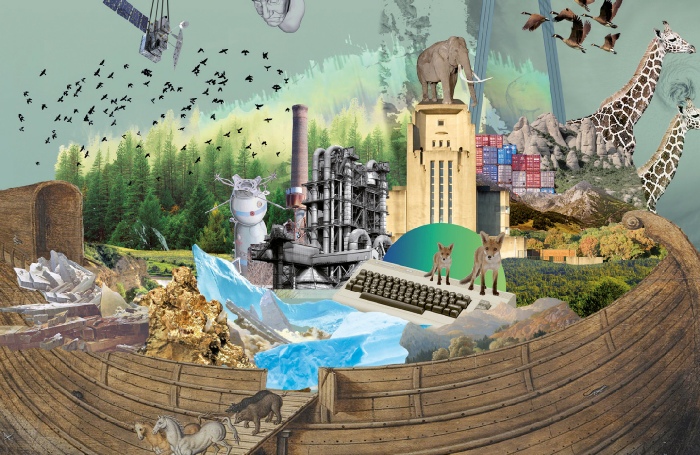Press Release
In the coming decades, humankind will face one of the most complex challenges it has had to address in its history. In the second half of the 21st century, we will have to stop emitting CO2 into the atmosphere forever. After the End of the World is a spatial essay on the present and future of climate change: a voyage to the landscapes of the Anthropocene planet; and a conversation with the humans and non-

After the End of the World
Centre de Cultura Contemporanià de Barcelone (Spain)
25.10.2017 - 29.04.2018

Exhibition October 25, 2017 -

© ArtCatalyse International / Marika Prévosto 2017. All Rights Reserved
Artists, philosophers, heaps of sand, novelists, sea creatures, playwrights, plants, architects, objects, speculative designers and scientists have worked together to imagine situations, to tell stories and to devise strategies for survival and peaceful cohabitation in the world to come. The result is a hypnotic and startling experience, one that exposes the trauma caused by the magnitude of the crisis and the disappearance of the world we once knew, but also one that speaks of the opportunity for change and of the pressing need for an intergenerational pact.
After the End of the World consists of eight immersive installations in the exhibition gallery, a base for participative experimentation and action in the public space of the city of Barcelona, and the design and launch of a Ministry of the Future to formulate very long-
The participants in After the End of the World include a coalition of humans and non-
Design: Diane Taro. Illustration: Fito Conesa.

The exhibition will also feature a staged prologue by Kim Stanley Robinson (US), one of the leading figures in contemporary sci-
After the End of the World also includes a base for experimentation and participatory action in the public space of the city of Barcelona, a City Station. Based on the conceptual framework proposed by the engineer and artist Natalie Jeremijenko, the Station houses her Environmental Health Clinic and consists of a series of infrastructures to carry out participatory actions where citizens contribute actively to improving environmental health. Activity takes the form of a series of recipes to improve the quality of the soil and the air, or increase green space and biodiversity.
Curator : JoséLuis de Vicente
Project Director: Rosa Ferr